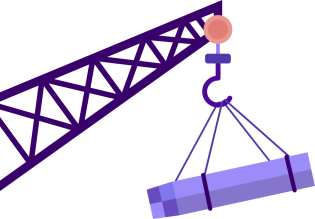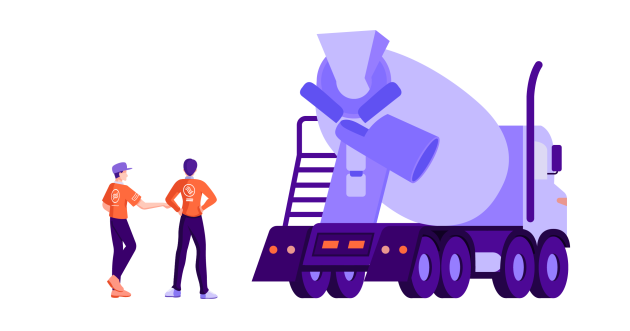
Maintaining drilling rig equipment is of paramount importance to ensure safe and efficient operations in the oil and gas industry. If you work in the drilling industry, you understand the need for a proper maintenance schedule and how hard it can be to manage all the moving parts.
This comprehensive guide will provide valuable insights into the various aspects of drilling rig maintenance, covering crucial components, daily maintenance checks, routine and preventive maintenance, cleaning and storage, documentation, common maintenance issues, implementing a preventive maintenance program, safety considerations, and the introduction of FieldInsight, a cutting-edge civil management software.
By following the recommendations in this guide, you can optimize the performance of your drilling rig, extend its lifespan, and minimize downtime. Gain control of your business with civil management software today.

Table of Contents
A drilling rig comprises several key components, each playing a vital role in its overall operation. Regular maintenance of these components is essential to prevent breakdowns and ensure the efficient functioning of the rig. The key components requiring regular maintenance include:

Performing daily equipment maintenance checks before using the drilling rig is a proactive measure to identify potential malfunctions and prevent accidents. The benefits of conducting these checks include:
Daily maintenance checks should include:
Routine and preventive maintenance tasks are essential for maximizing drilling rig performance and avoiding unexpected failures. The following tips should be incorporated into your maintenance program:

Proper cleaning and storage procedures are crucial for maintaining drilling rig equipment in optimal condition. Follow these tips to ensure equipment longevity:
Cleaning Procedures: Clean all components thoroughly after each use to remove mud, dirt, and debris. Use appropriate cleaning agents and techniques for different surfaces and materials.
Storage Guidelines: Store the drilling rig and its components in a clean, dry, and secure location. Protect the equipment from harsh weather conditions, unauthorized access, and potential damage.
Maintaining comprehensive documentation of maintenance activities is vital for efficient drilling rig maintenance. Creating and maintaining a practical maintenance logbook can help you:
Record Keeping: Keep a detailed record of maintenance tasks performed, including dates, observations, and any issues encountered.
Organizational Tips: Organize the logbook in a structured manner, making it easy to navigate and retrieve information when needed.

Even with regular maintenance, certain issues may arise in drilling rigs. Being aware of these common maintenance issues and knowing how to address them can help minimize downtime and ensure the safety of personnel. Some common issues include:
![]()
Implementing a preventive maintenance program can significantly enhance the reliability and longevity of drilling rig equipment. Key elements of a successful program include:
Planning and Scheduling: Proactively plan and schedule maintenance tasks based on equipment specifications and manufacturers’ recommendations.
Staff Training: Train personnel on maintenance procedures, safety protocols, and the importance of adherence to preventive maintenance schedules.
Documentation and Evaluation: Maintain detailed records of maintenance activities and periodically evaluate the program’s effectiveness to identify areas for improvement.
Safety should always be prioritized during drilling rig maintenance activities. Cultivating a safety-oriented culture and following established safety protocols contribute to better maintenance outcomes and minimize accidents. Consider the following safety considerations:
Safety Protocols: Develop and implement clear safety protocols for maintenance activities, including the use of personal protective equipment (PPE), lockout/tagout procedures, and working at heights guidelines.
Regular Safety Training: Conduct regular safety training sessions to educate personnel on potential hazards, safe practices, and emergency procedures.

When it comes to drilling rig maintenance management, FieldInsight stands out as a reliable and versatile software solution. With its extensive range of features and a focus on drilling rig maintenance, FieldInsight offers the flexibility, customizability, and scalability that drilling rig operators require to streamline their maintenance processes and ensure optimal performance.
FieldInsight is committed to the success of its customers. From seamless implementation to dedicated support, the FieldInsight team is there to assist with any queries or concerns. Regular updates and continuous improvement ensure that the software evolves to meet the changing needs of drilling rig maintenance management.
Make the transition to FieldInsight and experience a hassle-free, all-in-one platform that caters specifically to drilling rig maintenance. With FieldInsight, you can streamline your maintenance processes, enhance productivity, and ensure the optimal performance of your drilling rigs.

Adhering to daily maintenance checks, conducting routine inspections, replacing filters, lubricating joints, and addressing wear and tear are vital steps in keeping drilling rig components in top condition. Additionally, effective cleaning and proper storage techniques help prevent corrosion, premature wear, and other potential issues.
Documenting maintenance activities in a practical logbook allows for better organization, easy reference, and effective analysis of maintenance data. It enables proactive decision-making and optimization of maintenance schedules and procedures.
By being aware of common maintenance issues and knowing how to address them, operators can quickly resolve problems and minimize operational disruptions. However, it is essential to prioritize safety during maintenance activities, establish clear safety protocols, and cultivate a safety-oriented culture to protect personnel and equipment.
Stay ahead of the curve in drilling rig maintenance management with FieldInsight. Empower your team, optimize maintenance schedules, and minimize downtime.
Schedule a demo or reach out to our team today to discover how FieldInsight can revolutionize your drilling rig maintenance practices. Gain features from scheduled maintenance tracking for preventative maintenance, to automated reporting. Find out how FieldInsight can help you today.
What You Should Do Now
Related Posts


 Integration for Future Success" width="1282" height="630" />
Integration for Future Success" width="1282" height="630" />
Stay Updated With the Latest Info
Sign up to get our latest articles sent directly to your inbox.
By 2023, FieldInsight will have transformed the way Service & Maintenance businesses operate, significantly enhancing productivity and profitability. Our platform streamlines asset management, planned maintenance scheduling, project management, and mobile field service.
How It Works